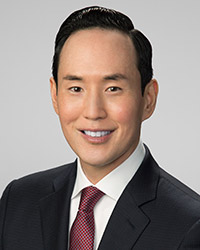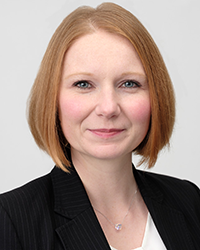
By Eleanor Hill, Editor, TMI
|

Lance Kawaguchi
Managing Director, Global Head – Corporates, Global Liquidity and Cash Management, HSBC |
You could be forgiven for thinking that Lance T. Kawaguchi, Managing Director, Global Head – Corporates, Global Liquidity and Cash Management, HSBC, is ‘all business’. But as we sit down to discuss the changing world his team is operating in, and his recent Treasury4Good Award win, it’s clear that there is more on his mind than cash management.
It’s not often that my conversations with senior bank executives kick off with a discussion around the lifespan of sea turtles. But then again Kawaguchi isn’t your average kind of guy. Recently named as TMI’s Outstanding Treasury4Good Leader 2019, ‘lean’ and ‘green’ are watchwords for Kawaguchi’s approach to business – from the way he manages his diverse team to the paper straw he carries everywhere in his suit pocket (really).
Eleanor Hill (EH): Why is it important to you to be an Environmental, Social and Governance (ESG) leader and how do you embody that?
Lance Kawaguchi (LK): Honestly, because ESG makes good business sense. It’s the right thing to do for people and the planet, but also for profits – numerous studies have shown this, but real-life business practice is increasingly demonstrating it too. The way in which companies approach everything from climate change to ethics in their supply chain can significantly impact business success. In today’s world, ESG is a key component of trust, reputation and innovation.
For me personally, being recognised by TMI as an ESG leader (thanks for the Award by the way!) reflects my ongoing commitment to working with clients and colleagues to implement creative solutions that contribute towards both the bank’s and our clients’ ESG objectives.
On the client side, this means working with internal stakeholders to support the build-out of more efficient digital solutions, keeping up to date with regulatory developments, and producing value-added content to educate clients on best practices when it comes to ESG.
For my team, this means removing any barriers that prevent them from being at their best and laying the foundations for them to thrive in their careers and fulfill their ambitions.
EH: It’s all well and good paying lip service to ESG, though. What commitments can you give in your role as Outstanding Treasury4Good Leader? And what are your priorities for the year ahead?
LK: You’re right, there’s no point just talking about ESG. We have to enact it too – and sometimes that means enforcing it, because often people don’t like change, even if it is for the greater good. There’s also an education piece that needs to happen to help secure buy-in for ESG initiatives.
One of my aims for 2020, therefore, is to help educate clients through another sustainability publication, building on the topics raised in HSBC’s Sustainability Guidebook for Treasurers which was released in Q4 2018. Ultimately, the goal is to ensure that treasurers have access to the latest ESG solutions and know how to deploy them to benefit both the treasury function and the wider organisation.
Within my own team, a key focus will be continuing to drive diversity – which is integral to business success. When I began my banking career, the industry was very homogeneous, with more or less one demographic, which wasn’t representative of the client base. To serve our clients in the best way possible, we need a diverse team.
When I say ‘diverse’ I’m not only talking about different genders and ethnicities, but also different ages – especially millennials and Generation Z. The way that digitally-native generations operate is different, and we need to be aware of that when recruiting and retaining talent. These generations also have different expectations from their employers and increasingly want to work for organisations that meet their sustainable and ethical standards. As such, I’ll be focusing closely on ensuring all forms of diversity in our current and future talent.
EH: I don’t want to put you on the spot (ok, I do) but are there any specific diversity criteria you are working towards within Global Liquidity and Cash Management?
LK: Throughout Global Liquidity and Cash Management we’re very supportive of the bank’s commitment to having 30% of senior leadership roles across the bank globally filled by women by 2020. That being said, when I took up my current role in July 2017, I needed to fill six senior positions and I ended up appointing only men. This may surprise readers, and no doubt could be construed as gender bias, but the sad truth is that no women applied for the roles.
As such, my personal target is to have a 50:50 split of male to female applicants for all future roles, which I will achieve by focusing on the talent pipeline – and encouraging women to believe in themselves more.
[[[PAGE]]]
EH: In what ways are you encouraging Black, Asian and minority ethnic (BAME) employees to reach their full potential? Is it something you take personally, given your own story?
LK: Absolutely. Being of Asian descent but raised in Hawaii, I’ve had my fair share of comments, including someone who accused me of “not being very Asian”. Go figure! So, yes, I’m passionate about empowering BAME employees and helping them to fulfill their potential.
I do this first and foremost by openly sharing my own experiences. For example, I’ve addressed diversity groups across HSBC, who have directly and indirectly benefited from my perspective on BAME issues. I also enjoy being a role model for BAME employees, having been recognised for two years running as one of the Top 100 BAME Leaders in Business. I hope this demonstrates to anyone who feels limited by their ethnicity that they can, and should, be ambitious.
EH: Where does inclusion sit within this diverse picture?
LK: To reach a state of true diversity in the workforce, inclusion is critical. Building an inclusive workforce is about making sure everyone has access to the workplace and that employees feel comfortable bringing their true selves to work. Alongside promoting educational workshops around key topics, such as transgender pronouns, to assist with cultural inclusivity, I ensure my team can work flexibly – regardless of whether an employee has a disability, a dependent, or simply requires peace and quiet to concentrate.
Honestly, as long as my team spend quality face-to-face time with clients and communicate well among each other, I’d be happy for them to work from Mars…if the working environment were safe! But you get the picture – being present in the office isn’t a reflection of productivity. I believe in enabling all employees to do their jobs to the best of their ability, in order to serve clients more efficiently.
From a leadership perspective, the trick to striking the right balance is ensuring that your team is not only diverse and inclusive but also well-integrated. This means ensuring that everyone is working towards a common goal, and communicating regularly around that goal.
EH: Focusing on leadership for a moment, what does leadership actually mean to you and how do you demonstrate it to your team?
LK: It’s simple: if this is an organisation where I want my kids to work, and where they would be happy to work, then I’ve done my job as a leader. That’s the litmus test for me – creating a safe and supportive work environment for current and future generations.
But leadership is multi-faceted and complex. Leadership also means equipping your team with everything they need to achieve their personal and career ambitions and removing any barriers getting in the way of their success.
What’s more, leadership is about identifying and investing in top talent to develop future leaders. While some senior executives feel threatened by capable junior staff, I believe a good leader should be confident in their team’s ability to one day step into their shoes.
Giving your team autonomy is another aspect of good leadership, in my view. I always tell my team that they are their own CEO. But they also know that when required, and at their request, I will step in and provide support and guidance. The door to my office is always open – literally and figuratively!
EH: Is leadership also about challenging the status quo when appropriate?
LK: One hundred percent. Being a strong leader is about having the courage to speak up and to question the way things are done – whether that be reviewing legacy processes or challenging the culture of the organisation. This is especially true when it comes to diversity and inclusion, and ESG as a whole.
Integrity requires courage; doing what’s right is not always easy. I actively encourage my team to speak up, so that they have a voice to call out poor behaviours or to highlight when things are not working well. My aim is for everyone to know that their concerns will be heard – regardless of their level on seniority or how long they have been part of the team.
EH: How important is mentoring in ensuring people reach their career goals?
LK: I’m a strong advocate for mentoring and reverse mentoring, and have several mentees as well as my own mentors. Whether inside or outside the organisation, mentors can maximise potential at different stages of your career and give an alternative perspective on situations.
Often, they can also help to raise awareness of your strengths and identify actions to be taken to improve performance. Mentors can also help to push you out of your comfort zone and challenge yourself in new ways, which is beneficial for personal and career growth.
[[[PAGE]]]
EH: Finally, what is the role of wellbeing in building and leading a high-performing team?
LK: It’s important to make sure that people focus on three things: their family; their work; and their health. The latter has become a big focus for my team, with the benefits of wellbeing now sinking in.
When I first started educating the team on wellbeing, there were a few raised eyebrows! But now that team members have been to stress management classes, taken time out in the day to play table tennis, and started eating more healthily, they are realising the close link between a healthy mind and body, and good performance at work.
As TMI’s first ever Outstanding Treasury4Good Leader, I’m proud to have been a catalyst for this mindset shift within Global Liquidity and Cash Management. Of course, the journey doesn’t stop there – more initiatives are in the pipeline – but a good leader always keeps something up his sleeve, so I’ll keep you guessing for now.




